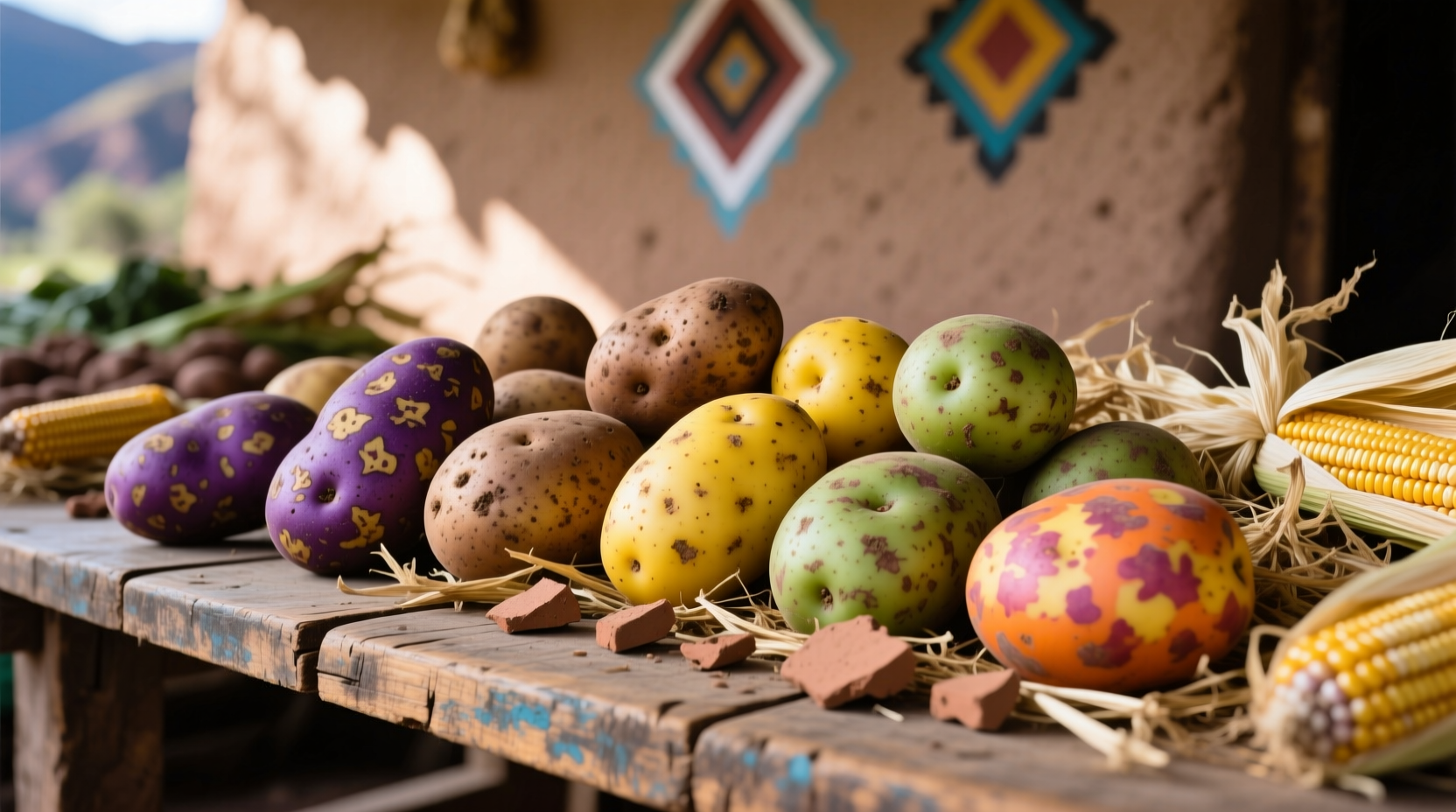Why Peruvian Potatoes Deserve a Place in Your Kitchen
Imagine discovering a culinary treasure that's been cultivated for millennia in one of Earth's most challenging environments. Peruvian potatoes aren't just another side dish—they represent an agricultural heritage that has sustained civilizations through extreme conditions. When you incorporate authentic Peruvian potato varieties into your cooking, you're not just adding flavor; you're connecting with an ancient food system that offers remarkable nutritional benefits and culinary versatility.
The Ancient Origins of Andean Potatoes
Archaeological evidence confirms potato cultivation in the Andes region began between 8,000-10,000 years ago near Lake Titicaca, straddling modern-day Peru and Bolivia. Unlike the few varieties available globally, Peru maintains over 4,000 distinct native potato types—a biodiversity treasure recognized by UNESCO as part of humanity's intangible cultural heritage. The International Potato Center (CIP) in Lima preserves more than 7,000 potato varieties, safeguarding this genetic diversity against climate threats and disease.

Understanding Peruvian Potato Diversity
Peruvian potatoes defy the monochromatic image most people have of this staple crop. These tubers appear in astonishing colors—deep purples, vibrant yellows, earthy reds, and even near-black varieties—each with unique flavor profiles and culinary applications. The diversity isn't merely aesthetic; different varieties have evolved to thrive at specific altitudes and soil conditions across Peru's dramatic elevation changes.
| Variety Type | Distinct Characteristics | Traditional Culinary Use |
|---|---|---|
| Papa Amarilla (Yellow Potato) | Creamy texture, buttery flavor | Causes, stews, mashed preparations |
| Papa Morada (Purple Potato) | High anthocyanin content, earthy flavor | Ceviche accompaniments, salads, baked dishes |
| Papa Negra (Black Potato) | Dense texture, nutty flavor | Chuño (freeze-dried potatoes), hearty stews |
| Papa Nativa (Native Varieties) | Thousands of unique shapes, colors, textures | Traditional Andean preparations, ceremonial uses |
Nutritional Powerhouse: Beyond Ordinary Potatoes
Scientific analysis reveals Peruvian potatoes offer significant nutritional advantages over commercially dominant varieties. Research from the Food and Agriculture Organization shows native Andean potatoes contain up to 50% more protein and significantly higher iron content than standard potatoes. Purple varieties like Papa Morada contain anthocyanins—powerful antioxidants also found in blueberries—that provide anti-inflammatory benefits.
A 2022 study published in the Journal of Nutrition documented that traditional Peruvian potato varieties maintain higher levels of essential amino acids and micronutrients even when grown in nutrient-poor soils—a testament to their evolutionary adaptation. This nutritional resilience makes them particularly valuable for food security initiatives in challenging agricultural environments worldwide.
Traditional Andean Cultivation Methods
Peruvian farmers employ sophisticated agricultural techniques developed over centuries to cultivate potatoes across diverse microclimates. The waru waru system—a raised field technique with water channels—creates microclimates that protect against frost while conserving water. This ancient method, rediscovered by agricultural scientists in the 1980s, demonstrates remarkable effectiveness against climate extremes.
Modern agricultural research from the International Potato Center confirms these traditional practices often outperform conventional farming methods in sustainability metrics. By rotating dozens of potato varieties across small plots, Andean farmers naturally control pests and maintain soil health without chemical inputs—a practice increasingly studied for global agricultural adaptation.
Bringing Peruvian Potatoes to Your Table
While authentic native Peruvian potatoes remain challenging to find outside specialty markets, several varieties have become more accessible in recent years. When selecting Peruvian potatoes, look for:
- Color variation - deeper pigments often indicate higher antioxidant content
- Firm texture - should feel dense with no soft spots or sprouting
- Regional labeling - authentic varieties often specify their Andean origin
Cooking with Peruvian potatoes requires slight technique adjustments. Yellow varieties like Papa Amarilla excel in creamy preparations but break down more easily than Russets when boiled. Purple potatoes maintain their striking color best when cooked with acidic ingredients like lime juice—a technique perfected in traditional Peruvian ceviche preparations. For authentic flavor, try incorporating ají (Peruvian chili peppers) and fresh huacatay (black mint) to complement the potatoes' natural earthiness.
Sourcing Authentic Peruvian Potatoes
Finding genuine Peruvian potato varieties requires knowing where to look. Specialty Latin American markets increasingly stock imported Andean potatoes, particularly during summer months. Farmers' markets in regions with significant Latin American communities often feature locally grown heritage varieties. Online specialty food retailers now offer limited seasonal availability of authentic Peruvian potatoes shipped directly from Andean cooperatives.
When authentic varieties aren't available, seek out heirloom potatoes with similar characteristics. Fingerling potatoes can substitute for some native varieties, while purple sweet potatoes offer comparable antioxidant benefits to Papa Morada. Remember that true Peruvian culinary experience comes not just from the potatoes themselves, but from understanding their cultural context and traditional preparation methods.
Frequently Asked Questions
How many varieties of potatoes exist in Peru?
Peru maintains over 4,000 native potato varieties, representing the greatest biodiversity of potatoes anywhere in the world. This genetic diversity has evolved over thousands of years across Peru's varied microclimates and elevations.
What makes Peruvian potatoes nutritionally superior?
Native Peruvian potatoes typically contain higher protein, iron, and antioxidant levels than commercial varieties. Purple varieties like Papa Morada contain significant anthocyanins, while many native types maintain better nutrient density even in poor soil conditions.
Can I grow authentic Peruvian potatoes at home?
While true native varieties require specific Andean growing conditions, several Peruvian potato types like Papa Amarilla and certain purple varieties can be grown in temperate climates. Seed potatoes from specialty agricultural suppliers allow home gardeners to cultivate these heritage varieties with proper care.
Why are Peruvian potatoes more expensive than regular potatoes?
Authentic Peruvian potatoes command higher prices due to limited availability, specialized cultivation requirements, and the preservation efforts required to maintain genetic diversity. Most commercial potatoes come from just a few high-yield varieties, while native Peruvian potatoes represent a fragile agricultural heritage.











 浙公网安备
33010002000092号
浙公网安备
33010002000092号 浙B2-20120091-4
浙B2-20120091-4